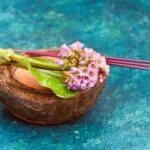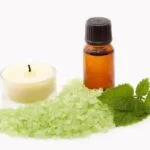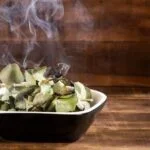Aromatherapy has been used for centuries as a holistic healing practice, harnessing the power of essential oils to promote physical, emotional, and mental well-being. In this article, we will explore how to use essential oil for aromatherapy, delving into its history, benefits, and practical applications. Whether you are new to the world of aromatherapy or an experienced practitioner looking to expand your knowledge, this guide will provide valuable insights on integrating essential oils into your self-care routine.
The use of essential oils for aromatherapy dates back thousands of years and is rooted in ancient civilizations such as Egypt, China, and India. These potent and aromatic plant extracts have long been prized for their therapeutic properties, offering a natural approach to health and wellness. Today, essential oils continue to be utilized for their myriad benefits, from relaxation and stress relief to immune support and pain management.
Understanding the basics of essential oils is crucial for successful aromatherapy practice. From lavender’s calming effects to eucalyptus’s respiratory benefits, each oil possesses unique therapeutic properties that can be tailored to individual needs. By choosing the right essential oil and learning how to properly apply it, you can harness the full potential of aromatherapy in your daily life.
Choosing the Right Essential Oils for Aromatherapy
When it comes to using essential oils for aromatherapy, selecting the right oils is crucial to experiencing their therapeutic benefits. There are numerous essential oils available, each with its own unique properties and potential health benefits. It’s important to consider your specific needs and preferences when choosing which essential oils to use for aromatherapy.
To begin, take some time to research the different types of essential oils and their therapeutic properties. For example, lavender oil is well-known for its calming and relaxing effects, making it beneficial for stress relief and promoting better sleep. On the other hand, peppermint oil is often used for its invigorating and energizing properties, helping to boost focus and mental clarity.
When choosing essential oils for aromatherapy, it’s essential to consider any personal sensitivities or allergies you may have. Additionally, if you have specific health concerns or goals in mind, such as improving respiratory health or alleviating muscle tension, selecting oils that target those areas can be beneficial.
Once you’ve identified the essential oils that align with your needs and preferences, you can explore different methods of using them for aromatherapy. Whether through inhalation methods like diffusers or topical application through massage oils, the right essential oils can contribute significantly to your overall well-being.
| Essential Oil | Therapeutic Properties |
|---|---|
| Lavender | Calming, stress relief, sleep promotion |
| Peppermint | Invigorating, mental focus and clarity |
Methods of Using Essential Oils for Aromatherapy
Inhalation Methods
Inhalation is one of the most common and effective ways to use essential oils for aromatherapy. There are several methods for inhalation, including using a diffuser, steam inhalation, and direct inhalation. Using a diffuser allows the essential oil to be dispersed into the air, providing a continuous aroma throughout a room.
Steam inhalation involves adding a few drops of essential oil to a bowl of hot water and inhaling the vapors. Direct inhalation can be done by simply opening a bottle of essential oil and taking a few deep breaths.
Topical Application Methods
Another popular way to use essential oils for aromatherapy is through topical application. This can be achieved by diluting the essential oil with a carrier oil and using it for massage, adding it to bath salts for a relaxing soak, or applying it as a compress. When using essential oils topically, it’s important to properly dilute them to avoid skin irritation.
Combining Inhalation and Topical Application
For an even more potent aromatherapy experience, combining inhalation and topical application methods can be beneficial. For example, using an essential oil in a diffuser while also applying it topically can enhance the therapeutic effects. It’s important to understand the specific properties of each essential oil and how they interact with different methods of use in order to maximize their benefits.
By understanding these various methods of using essential oils for aromatherapy, individuals can tailor their practice to their specific needs and preferences. Whether seeking emotional support, physical wellness, or simply creating an uplifting atmosphere at home or work, there are numerous ways to incorporate the power of essential oils into daily life.
Safety Precautions and Best Practices for Using Essential Oils
When using essential oils for aromatherapy, it’s important to prioritize safety and best practices to ensure a positive and beneficial experience. Here are some guidelines and precautions to keep in mind:
- Always dilute essential oils before applying them to the skin. This can be done with a carrier oil such as coconut, almond, or jojoba oil.
- Before using any new essential oil, perform a patch test on a small area of your skin to check for any adverse reactions or sensitivity.
- Keep essential oils out of reach of children and pets, as certain oils can be harmful if ingested or if they come into contact with sensitive areas such as eyes and mucous membranes.
In addition to these precautions, it’s also important to consider the specific needs of individuals when using essential oils for aromatherapy. For example:
- For pregnant women or individuals with certain medical conditions, it’s important to consult with a healthcare professional before using essential oils.
- Some essential oils may not be suitable for individuals with respiratory issues or allergies, so it’s crucial to research and use caution when selecting oils for inhalation.
Following these safety precautions and best practices will help ensure that you can enjoy the benefits of aromatherapy while minimizing any potential risks or adverse reactions.
As an added tip for safe usage, always store your essential oils in dark glass bottles away from direct sunlight and heat. This will help preserve their potency and prevent them from degrading over time.
Whether you’re new to aromatherapy or have been using essential oils for a while, prioritizing safety is key in reaping the full benefits of this natural wellness practice.
Aromatherapy and Emotional Well-Being
Aromatherapy has long been recognized for its ability to positively impact emotional well-being. The sense of smell is closely linked to the brain’s emotional center, making essential oils a powerful tool for promoting relaxation, stress relief, and mood enhancement. When using essential oils for aromatherapy, it’s important to understand how different scents can affect your emotions.
Lavender essential oil, for example, is well-known for its calming and soothing properties. Diffusing lavender oil in your home or workspace can help create a serene atmosphere that promotes relaxation and stress relief. On the other hand, uplifting citrus oils like lemon and orange can brighten your mood and increase feelings of positivity and energy.
When considering how to use essential oil for aromatherapy to support emotional well-being, it’s also essential to practice self-awareness and personal preference. Each individual may respond differently to various scents, so it’s important to experiment with different essential oils to find the ones that have the most positive impact on your emotional state.
Moreover, essential oils can be used in conjunction with mindfulness practices such as meditation or yoga to enhance their therapeutic effects on emotional health. By incorporating aromatherapy into these activities, individuals can deepen their mind-body connection and experience an even greater sense of emotional balance and well-being.
| Essential Oil | Therapeutic Properties |
|---|---|
| Lavender | Calming and soothing; promotes relaxation |
| Lemon & Orange | Uplifting; increases positivity and energy |
Aromatherapy for Physical Health and Wellness
Aromatherapy is a powerful tool for not only improving emotional well-being but also for supporting physical health and wellness. Essential oils have been used for centuries to address various health concerns, and their therapeutic properties make them valuable in promoting overall vitality.
When it comes to harnessing the benefits of essential oils for physical health, it’s important to select the right oils based on their specific properties. Some essential oils are known for their anti-inflammatory effects, making them ideal for addressing pain and discomfort. Others have immune-supporting properties, which can be beneficial in warding off seasonal illnesses. Additionally, certain essential oils have been shown to support respiratory health, making them helpful for individuals dealing with congestion or allergies.
Essential Oils for Physical Health and Wellness
- Lavender – Known for its calming and pain-relieving properties
- Peppermint – Effective in providing relief from headaches and muscle aches
- Eucalyptus – Useful for supporting respiratory health and clearing congestion
- Tea Tree – Well-regarded for its antimicrobial and immune-boosting qualities
Incorporating these essential oils into your aromatherapy routine can help you proactively manage your physical well-being. Whether through diffusion, topical application, or inhalation methods, these oils can play a significant role in supporting your overall health.
It’s important to note that while essential oils carry numerous benefits, they should be used with caution. Dilution guidelines must be followed to avoid skin irritation or other adverse reactions. Consulting with a qualified aromatherapist or healthcare professional is recommended when using essential oils for specific health concerns. By understanding the therapeutic properties of different essential oils, you can effectively use them to address various physical health needs.
Incorporating Aromatherapy Into Daily Life
Aromatherapy can be a wonderful addition to your daily routine, providing numerous benefits for your physical and emotional well-being. Whether you are looking to reduce stress, improve your mood, or simply create a more inviting atmosphere at home or work, essential oils can play a key role in enhancing your overall lifestyle. This section will explore some practical tips for integrating aromatherapy into your self-care routine and creating a soothing and uplifting environment.
Tips for Using Essential Oils Daily
One of the simplest ways to incorporate aromatherapy into your daily life is by using a diffuser. Adding a few drops of your favorite essential oil to a diffuser can fill the air with a pleasant aroma, helping to create a calming and relaxing atmosphere. Additionally, you can add essential oils to unscented candles or use them in homemade room sprays to infuse your living spaces with delightful scents.
Another option is to utilize essential oils as part of your personal care routine. You can add a few drops of essential oil to unscented lotions, body oils, or bath products for an extra dose of relaxation and skin nourishment. Alternatively, you can create your own custom scent by blending different essential oils together.
Creating an Inviting Environment
Incorporating aromatherapy into your daily life also involves creating an inviting and peaceful environment in which you can fully enjoy the benefits of essential oils. This may include setting up designated relaxation areas in your home where you can unwind and practice self-care rituals. Consider adding warm lighting, cozy blankets, comfortable seating, and soothing music to enhance the overall experience.
Additionally, bringing aromatherapy into your workspace can help improve productivity and reduce stress during the workday. Keep a small diffuser on hand with energizing or focus-enhancing essential oils such as peppermint or citrus blends to boost motivation and mental clarity while working.
Overall, incorporating aromatherapy into daily life is all about finding creative ways to infuse essential oils into various aspects of your routine, from morning rituals to evening wind-downs. With some experimentation and creativity, you can discover the perfect blend of scents that resonates with you and enhances every day with its therapeutic effects.
Resources for Getting Started With Aromatherapy
In conclusion, incorporating aromatherapy into your daily life can have a profound impact on both your emotional well-being and physical health. By choosing the right essential oils for your needs and preferences, and using them in the appropriate methods, you can experience the therapeutic benefits of aromatherapy. Whether you are looking to reduce stress, boost your immune system, or create a calming atmosphere at home or work, essential oils can be a powerful tool for self-care and wellness.
When it comes to using essential oils for aromatherapy, it’s important to prioritize safety and best practices. Dilution guidelines, precautions for sensitive individuals, children, and pets, as well as understanding different inhalation and topical application methods are crucial aspects to consider. By being informed about these safety measures and taking proper precautions, you can enjoy the benefits of essential oils without any adverse effects.
For those who are new to aromatherapy or looking to expand their knowledge, there are numerous resources available for getting started with essential oils. From trusted sources to high-quality oil suppliers and additional reading materials for further exploration, there is no shortage of information to support your journey into the world of aromatherapy. By arming yourself with knowledge and resources, you can confidently integrate essential oils into your self-care routine and harness their potential for holistic well-being.
Overall, understanding how to use essential oil for aromatherapy is not only about reaping the benefits of specific scents but also about promoting balance within mind and body. With careful consideration of safety measures and an informed approach to choosing and using essential oils, you can enhance your overall wellness through the power of aromatherapy.
Frequently Asked Questions
How Do You Dilute Essential Oils for Aromatherapy?
Diluting essential oils for aromatherapy is essential for safe use. The most common method is to mix a few drops of essential oil with a carrier oil, such as coconut or almond oil. This helps prevent skin irritation and allows for easier application.
What Is the Most Effective Way to Use Essential Oils?
The most effective way to use essential oils depends on the individual’s needs and preferences. Some people prefer using a diffuser to distribute the aroma throughout a room, while others may apply diluted oil directly to their skin or add it to bath water. Experimenting with different methods can help determine what works best.
How Many Drops of Essential Oil for Aromatherapy?
The number of drops of essential oil used in aromatherapy varies depending on factors such as the type of oil, the individual’s sensitivity, and the desired strength of the aroma. As a general guideline, a safe starting point is 3-5 drops per teaspoon of carrier oil for topical application or 5-10 drops in a diffuser.
Adjustments can be made based on personal preference and experience with the specific oil being used.

Are you looking for a natural way to improve your health and wellbeing?
If so, aromatherapy may be the answer for you.





